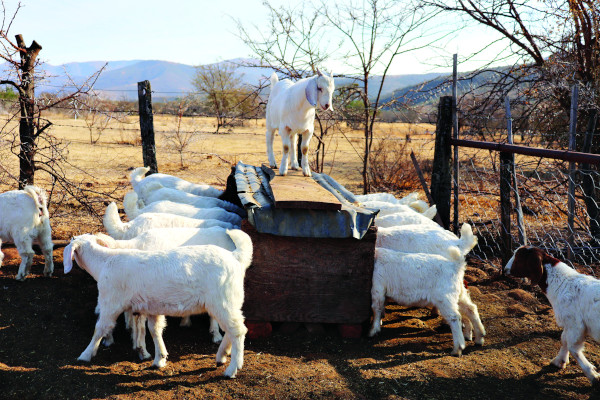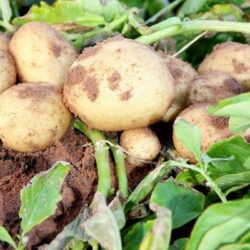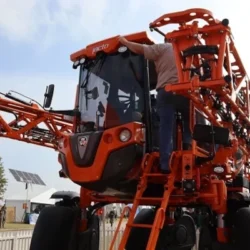Production conditions are currently ideal, but be proactive and prepare for the possibility of a drought associated with a super El Niño. This can prevent a later debt trap.
For the 2023-24 season, a super El Niño phenomenon is predicted. There have been four such super events in the past 50 years – in 1972-73, 1982-83, 1997-98 and 2015-16.
Each of them coincided with widespread drought conditions across Southern Africa – and each was more intense than the last.
The forecast indicates that the upcoming event will be the worst of all. The purpose of this article is not to be alarmist but to help livestock farmers prepare early in case the prediction comes true.
5 things not to do
Do not panic.
Do not do nothing. Consider the current prediction as just that, a prediction. The past shows that not all parts of Southern Africa experience drought during an El Niño event. Willem Symington, vice-chairman of Agri Northern Cape, always says, “Hope is not a strategy.” Prepare for the worst then hope for the best outcome; don’t hope then wait to see what happens.
Do not overestimate and exceed the carrying capacity of the farm.
Do not take unnecessary risks, such as not putting rams with ewes.
Do not squander existing feed on the farm.
15 steps to take
Develop a strategic plan with the assumption of drought. The following components should be part of it:
Gather a group of experienced farmers and advisers in your area and ask them to share their experience of previous droughts with the rest of the community. What worked and what didn’t? Put it in writing and circulate it to fellow farmers.
Monitor the development of a possible drought closely. Farmers with good grazing systems will quickly notice if the pasture starts deteriorating as the rain stays away. Follow the latest El Niño forecasts. The Department of Agriculture and the Agricultural Research Council have excellent websites where monthly reports are provided, or subscribe to Johan van den Berg’s monthly newsletter.
Preserve as much of the feed currently in the field as possible.
Get rid of animals that exceed the carrying capacity of the farm early on. The sooner, the better.
Get rid of passengers early on, meaning unproductive animals that do not contribute to the farm’s profits. This includes breeding animals with proven poor reproductive performance, animals that were supposed to be marketed but are being held back in anticipation of better market conditions and prices, and an excess of horses, mules and donkeys. Also, reduce wildlife numbers on the farm to sustainable levels this winter.
Maintain above-average preparedness for veld fires. Create proper firebreaks. Ensure that all firefighting equipment is in working and serviceable condition. The fire control committee should be active. Inform neighbours when you will be away from home during the fire season so they can watch for fires on your farm. Develop a contingency plan for areas where fires are difficult to combat, such as mountainous and challenging terrain.
Store self-produced feed – at least enough to get you to the beginning of the 2024-25 rainy season. Consider withholding feed that would normally be sold, or harvesting and storing feed that would normally be burned or ploughed under (such as crop residues).
Decide in advance which animals should be culled if necessary. Reducing animals sooner is always the best strategy. Many farmers have been burned by holding onto animals that should have been culled sooner. Then they were forced to sell when the animals were already thin and meat prices had significantly decreased.
Decide at what time during the drought the reduction of animals will begin. Decide which animals should be moved to areas with less severe drought and which will be sold. The drought that prevailed until 2019-20 showed that it is generally better to relocate breeding animals than to sell them, especially if the breeding animals are reduced to less than the core herd. Many farmers who significantly reduced their herds survived the drought but not the subsequent rain, as they had too few animals left to recover their livestock numbers.
Decide what will be done with the money from the animals being sold. The worst scenario is to spend it on feed and household expenses. Try to save it to buy animals after the drought.
Decide in advance which animals will be fed, what feed they will receive and where they will be fed – in the field or in a feeding kraal? It is better to start supplementary feeding early.
It is always beneficial to wean calves and lambs early in a drought, and creep feeding is very helpful for this. The breeding animals will then recover faster and can continue on cheaper feed. Animals that have received creep feed quickly adapt to a feeding kraal, which is cost-effective.
It is better to feed animals in smaller paddocks around the house or in a feeding kraal, rather than in the field. Do not allow the field to be trampled during a drought by animals aimlessly roaming larger paddocks in search of grazing. They also waste precious energy in doing so.
Plan the ration and the possible quantities that will be needed. Then start planning a strategy for feed procurement and storage.
Do financial planning until at least the beginning of the 2024-25 rainy season. Support it with cash-flow scenarios for farming and personal expenses. Consider delaying major capital expansions.
Be optimistic and proactive rather than wishing away the possibility of a drought in 2023-24 or accepting that nothing can be done about it.
The older the livestock farmer is when a drought strikes, the more important it is to be proactive and not fall into a debt trap during the drought.
Seize the opportunity now and do not wait too long.




